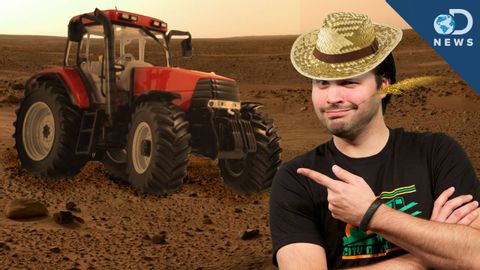我們能在火星上種植植物嗎? (Can We Grow Plants on Mars?)
Jack 發佈於 2021 年 01 月 14 日  沒有此條件下的單字
沒有此條件下的單字- n. (c./u.)廠房;植物;種植;設備;內線
- v.t.固定;廠;暗中放置;栽贓
US /ˈwɔtɚ, ˈwɑtɚ/
・
UK /'wɔ:tə(r)/
- n. (u.)水;水域
- v.i.流淚;(嘴)想到好吃的食物而濕潤
- v.t.澆水
US /ˈdɪfɪˌkʌlt, -kəlt/
・
UK /'dɪfɪkəlt/
- v.i.現場;住;住
- adj.現場直播的;帶電的;燃燒;活的
- v.t.活著
- adv.現場直播

